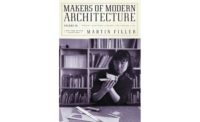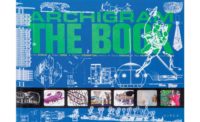If you meet Craig Hodgetts, it’s hard not to be swept up by his general enthusiasm—not just about architecture, but about people, cars, cities, and surfing. That gusto permeates his writings, which span nearly half a century, condensed and collected into this volume. Divided into four categories—polemics, projects, people, and performances—the book unveils the ideas and possibilities that have influenced Hodgetts’s architectural work.
As the practice of Hodgetts and Hsinming Fung, partner (and wife), has grown—from its founding as H+F in 1984 to its current merger with Mithun—so have the texts that begin with his early-career efforts with Los Angeles architect Robert Mangurian. One essay is a testament to the negotiating skills of both Hodgetts and Fung: though Hodgetts, as the outgoing associate dean, thoroughly lambasted the architecture at the California Institute of the Arts campus in Valencia in a 1973 Art Forum article, the couple still ended up with the school as the client for their Wild Beast Pavilion for music some 30 years later.
As an architecture student on the East Coast in the mid-1960s, Hodgetts studied with James Stirling at Yale University, and he includes three essays about his British mentor. A profile published in 1976 in Design Quarterly shows that Hodgetts had embedded himself with Stirling at his home and office in London, observing the idiosyncrasies of the character who loomed large in his life. The other pieces provide a measured retrospective look: one, a critique of the Ayala Science Library at the University of California, Irvine, completed in 1994, two years after Stirling’s death, alternates between Hodgetts praising the solidity of the design and reluctantly recognizing that it was not one of Stirling’s best works.
Other writings include assessments of the Los Angeles residential architecture of John Lautner, the Santa Monica house that Frank Gehry designed for himself and family in 1977, and even ruminations on a car Le Corbusier designed in 1936. Yet an urban thrust underlies Hodgetts’s contributions. In the essay from which the book draws its title, the author crafts a love letter to Los Angeles, the city he has inhabited for the better part of four decades (he was born in Cincinnati). Hodgetts finds that the city’s streets and freeways have a logic, while knowing that the beach is its soul. All considered, the collection, including fiction, collages, and designs for film sets, proves that whatever the medium, his all-encompassing energy translates into impressive production.







